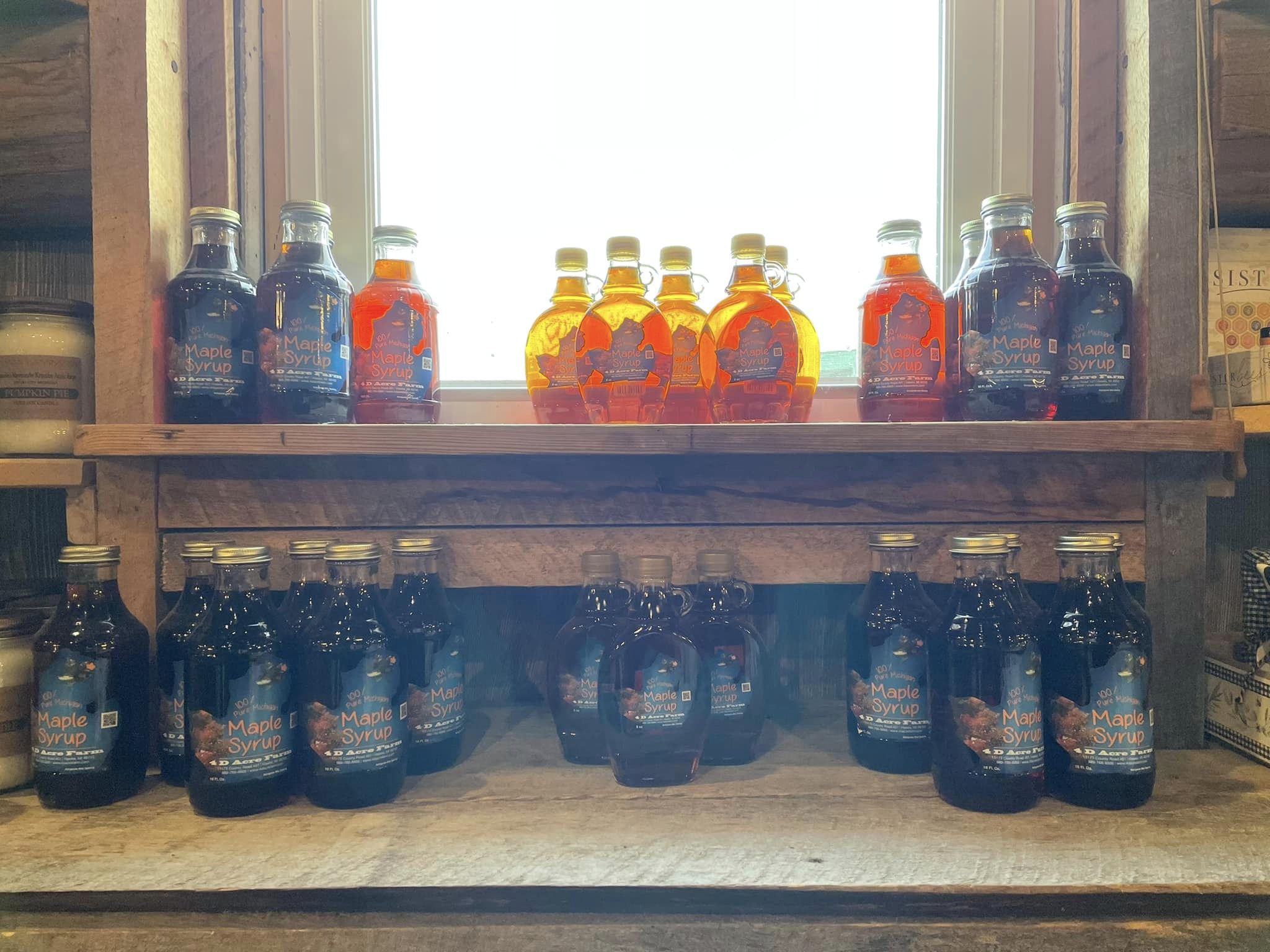Michigan is blessed with an abundance of maple trees, and maple syrup is the first farm crop to be harvested in Michigan each year. The process of making maple syrup didn’t begin with pancakes, though. North American Indians used it both as food and as medicine. Early American settlers observed the process from the Native Americans, and it soon turned into a common trade. Now, hundreds of generations later, many Alpena residents look forward to continuing the age-old tradition each spring.
The first step is “tapping” the trees. A hole is drilled into the tree and a spout (spile) is hammered in. Many people recommend drilling the holes on the sunny south side of the trunk. Next, a clean container is hung on the tree to collect the running sap from the spout. There are many different variations in equipment used for collecting sap. The most commonly used is a bucket with a lid, although some use special sap bags, and others even connect direct lines to the trees that carry the sap through a system to a reservoir.
It’s important to keep the containers covered as best as possible to keep snow and debris out. Sap containers are usually emptied daily, as the sap will spoil quickly. Sap needs to be stored in a cool dark place until enough is collected to begin boiling. It’s helpful to filter the sap before boiling it to get out any leaves or minor debris. (It will be filtered again before it’s bottled). After the sap is collected, it is poured into a large vat or cooking pot and boiled down to evaporate all excess fluid, turning it into a pure sugar syrup.
This process can take a while, as it takes about 40 gallons of maple sap to produce 1 gallon of maple syrup. It is also best to keep this part of the process outdoors, as it can create a lot of steam. A wood fire, camp stove, or propane are common ways to boil the sap, although many people like the smoky flavor that develops when cooking over a wood fire.
Once the bulk of the boiling is done outside, it can be finished up on an indoor cook stove. The sap will need to be boiled until it reaches about 66-67% sugar. After the sap has reached the syrup stage, it is then filtered again several times to be sure any sediment or sugar sand is filtered out. It’s now ready to eat! Canning it in sterile glass jars is an excellent way to preserve the syrup for later use.








 420 N. 2nd Ave. Alpena, MI 49707
420 N. 2nd Ave. Alpena, MI 49707 989-340-2288
989-340-2288 